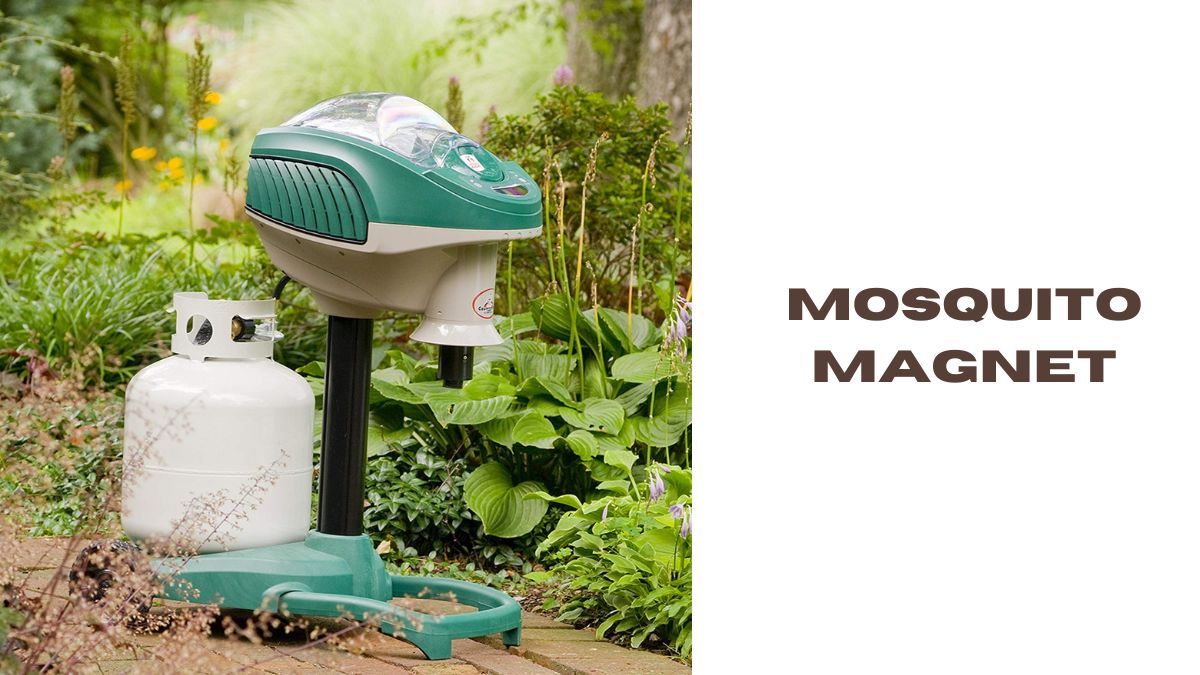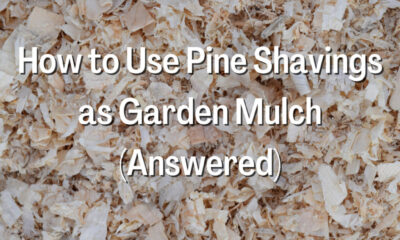Gardening
Can You Grow Plants in Sand? (Important Information)

If you’ve ever scoured the internet or local nursery for plant care advice, you may have heard or read that it’s impossible to grow plants in sand.
But is it really? Well, yes and no. The truth is that while sand alone can’t sustain plant life, it can help support some of them.
So here’s what you need to know about growing plants in the sandy soil of your garden.
Can I really grow plants in the sand?
Can you grow plants in the sand? The short answer is yes, but it’s not as easy as growing them in regular potting soil. Also, it can be unclear if you’re starting out with seedlings since they may not seem to thrive.
The longer answer involves understanding what happens when you plant a seedling into the sand. The water and nutrients from your sandy mix will leach through the sand much faster than they would with regular soil. This causes problems for your roots because they cannot access those nutrients or moisture without help from above-ground sources like watering cans or drip irrigation systems (which also require electricity).
Why does the sand need to be mixed with other materials?
Sand is not an ideal material for growing plants. It has a lot of drawbacks, such as:
- Inferior nutrient content. Plants need nutrients to grow and develop properly, but sand does not contain enough nutrients. Instead, add fertilizers or other organic matter to help the plants absorb the necessary nutrients.
- Poor water retention. Sand also doesn’t hold onto water very well, so you’ll have to make sure your plants get enough water consistently—and monitor them closely if they start looking wilted or limp in any way (this can happen even if you’re watering regularly). Since sand offers little resistance against erosion and allows water to pass through more quickly than soil does, it may be more difficult for you to take care of your houseplants if they’re planted in the sand instead of soil!
Related Post: How to Protect Your Raised Garden Beds from Rabbits (Explained)
What about pure beach sand?
You may be wondering if beach sand will support plant life. Unfortunately, the answer is no, although it won’t hurt anything to try. Beach sand is made up of tiny pieces of rock and shell, but these are too large to be used as soil by plants.
If you’re looking for something that’s going to produce a lovely garden, then beach sand just isn’t going to cut it.
How do you make your own sandy potting soil mix?
Sand is a great choice for container plants because it doesn’t retain water or nutrients and helps prevent root rot.
To make your own sandy potting soil mix, you’ll need to combine sand with compost and perlite.
Combine 50% sand and 50% compost in a big bucket (the ratio may vary depending on the type of plants you’re growing). Add moisture if necessary—you should be able to squeeze handfuls of this mixture easily.
If you’re growing containerized perennials or annuals that require extra nutrients, add some peat moss at this point in your recipe. This will provide them with more nitrogen than plain compost would provide without sacrificing drainage capacity too much; still, be sure not to use too much peat moss as it can become acidic over time due to its high acidity level compared with other ingredients in the recipe like sphagnum mosses or pine bark chips which are more alkaline (meaning they have less free carbon dioxide inside them).
You will need to help prevent problems like a nutrient burn when fertilizer has leached out all moisture from plant roots because there isn’t enough oxygen within root cells for respiration processes currently occurring (such as photosynthesis). However, there’s still too much CO2 present around leaf surfaces.
Related Post: The Ultimate Guide to Growing Cilantro (Everything You Need to Know)
What are the top plants for sandy soil?
There are a few different plants that can grow well in sandy soil. These include:
Clover
This is one of the top plants for sandy soil, as it doesn’t need much water to survive and can thrive with little to no maintenance. The clover plant is also known as a nitrogen fixer, which helps add nutrients to the soil so other plants can thrive. It also inhibits erosion by absorbing water from runoff and prevents wind erosion by stabilizing sand particles on hillsides or dunes.
Lettuce
Lettuce grows well in sandy soil because its roots are shallow, meaning they absorb moisture from deep down below ground level and above-ground sources like rainfall instead of just one or the other—which means less watering overall!
Radish
Radishes grow quickly when planted directly into loose sand; however, when you remove them after harvest (or before they start forming their bulbs), they will leave behind small holes where water can seep through more easily so your other vegetables won’t dry out so quickly next time around!
Plants can grow in the sand as long as it is mixed with other elements.
Sand is a suitable medium for growing plants but needs to be mixed with other materials. Beach sand is a good example of this. It’s excellent at holding moisture and nutrients, but it doesn’t have the microorganisms to break down organic matter and fertilize your plants. So if you want to grow anything in your backyard sandbox that isn’t just sand, you’ll need to add some extra stuff too!
Related Post: Can I Use Miracle Gro Garden Soil in Pots? (Answered)
Conclusion
And now you know the answer to the question: can you grow plants in the sand? The short answer is yes, but it depends on a few factors. If you have sandy soil, your best bet is to mix it with other ingredients before planting any plants.
Gardening
Lipton Hot Tea: Savoring Tradition and Wellness

Lipton Hot Tea has long been synonymous with comfort, warmth, and relaxation. From its humble beginnings to its global presence today, Lipton has remained a staple in households around the world. This article explores the rich history, diverse varieties, health benefits, and cultural significance of Lipton Hot Tea.
Introduction to Lipton Hot Tea
Lipton Hot Tea, produced by the renowned brand Lipton, offers a delightful range of flavors and blends to suit every palate. Whether enjoyed as a morning pick-me-up, a midday refreshment, or a soothing beverage before bedtime, Lipton Hot Tea has become a cherished part of daily rituals for millions.
History and Background of Lipton
The story of Lipton Hot Tea dates back to the late 19th century when Sir Thomas Lipton established his tea empire. With a vision to make quality tea accessible to all, Lipton revolutionized the tea industry by offering affordable yet superior teas to consumers.
Varieties of Lipton Hot Tea
Lipton Hot Tea boasts a diverse range of offerings, including Classic Black Tea, Green Tea, and Herbal Infusions. Each variety is carefully crafted to deliver a unique flavor profile and aroma, satisfying tea enthusiasts worldwide.
Classic Black Tea
Lipton’s Classic Black Tea is a timeless favorite, known for its robust flavor and invigorating qualities. Sourced from the finest tea gardens, this tea offers a bold and satisfying brew that can be enjoyed at any time of the day.
Green Tea
Renowned for its health benefits and delicate taste, Lipton’s Green Tea is a popular choice among health-conscious consumers. Packed with antioxidants and nutrients, green tea provides a refreshing and revitalizing experience with every sip.
Herbal Infusions
Lipton’s Herbal Infusions blend natural herbs and spices to create soothing and aromatic teas. From calming chamomile to invigorating peppermint, these herbal blends offer a caffeine-free alternative for relaxation and wellness.
Health Benefits of Liptons Hot Tea
Beyond its delightful taste, Lipton Hot Tea offers numerous health benefits. Rich in antioxidants, vitamins, and minerals, tea consumption has been linked to various wellness advantages, including:
- Antioxidant Properties: Liptons Hot Tea contains antioxidants such as catechins and flavonoids, which help protect the body from oxidative stress and inflammation.
- Boosting Immune System: The natural compounds found in tea may support immune function, helping the body defend against infections and illnesses.
- Improving Heart Health: Regular consumption of tea has been associated with lower risk factors for heart disease, including reduced cholesterol levels and improved blood vessel function.
How to Prepare Liptons Hot Tea
Preparing Liptons Hot Tea is a simple and enjoyable process, whether using traditional brewing methods or opting for convenient instant tea options.
Traditional Brewing Method
To brew a perfect cup of Liptons Hot Tea, start by boiling fresh water and pouring it over a tea bag in your favorite mug. Allow the tea to steep for 3-5 minutes, depending on your desired strength, then remove the tea bag and enjoy!
Instant Tea Preparation
For a quick and easy alternative, Lipton offers instant tea powders and tea bags that can be simply mix with hot water for instant gratification. Perfect for busy mornings or on-the-go refreshment, instant tea provides the same great taste without the wait.
Liptons Hot Tea and Sustainability Efforts
As a responsible tea producer, Lipton is committed to sustainability practices that protect the environment and support local communities. From responsible sourcing to waste reduction initiatives. Lipton strives to minimize its ecological footprint and promote a more sustainable future for tea cultivation.
Liptons Hot Tea and Community Impact
Through partnerships and initiatives, Lipton actively engages with tea-growing communities to improve livelihoods, education, and healthcare. By empowering farmers and investing in community development projects. Lipton aims to create positive change and foster sustainable growth in tea-producing regions.
Liptons Hot Tea: A Versatile Beverage
Whether enjoyed hot or cold, plain or flavored. Liptons Hot Tea offers endless versatility to suit every taste preference and occasion. From classic Earl Grey to exotic fruit blends, there’s a Lipton tea for every mood and moment.
Popular Flavors and Blends of Liptons Hot Tea
Lipton’s extensive range of flavors and blends caters to a diverse audience, with popular choices including:
- Earl Grey: A classic blend of black tea with bergamot flavoring, Earl Grey offers a fragrant and sophisticated taste experience.
- Lemon Ginger: Combining zesty lemon with warming ginger, this herbal infusion is perfect for soothing the senses and aiding digestion.
- Mint Green Tea: Refreshing and invigorating, mint green tea combines the crispness of green tea with the coolness of mint for a revitalizing beverage.
Lipton Hot Tea: A Beverage for All Seasons
While often associated with cozy winter evenings, Lipton Hot Tea is enjoy year-round, offering comfort and hydration in every season. Whether served steaming hot in winter or over ice in summer, Lipton tea provides a refreshing and satisfying beverage experience.
Enjoying Lipton Hot Tea Around the World
From bustling cities to remote villages, Lipton Hot Tea has transcended borders and cultures, becoming a beloved beverage enjoyed by people around the world. Whether shared among friends, savored alone, or incorporated into cultural traditions. Lipton tea unites people in moments of warmth and connection.
Gardening
What Is Seed Scarification, and What Are Its Benefits?

Seed scarification is the process of breaking down the seed coat so that water can more easily penetrate and the seed can germinate. There are many benefits to scarifying seeds, including:
- Increased germination rates: Scarified seeds have a much higher chance of germinating than non-scarified seeds.
- Faster germination: Scarified seeds will often germinate faster than non-scarified seeds.
- Better plant establishment: Seedlings that emerge from scarified seeds tend to be healthier and more vigorous, leading to better establishment in the landscape.
- More uniform emergence: When all of the seeds in a population have been scarified, they will tend to germinate more uniformly, resulting in a more even stand of plants.
- Better weed control: One of the benefits of better plant establishment is that it can help reduce weeds. Weeds are often competitive with young seedlings for resources like water and light, so if the seedlings are stronger and healthier, they are less likely to be outcompeted by weeds.
Several methods can be used to scarify seeds, including mechanical abrasion, chemical treatment, or exposure to fire or smoke. The best method will depend on the type of seed being scarified and the desired results.
Related Post: Should You Add Worms to Your Raised Garden Bed? (Answered)
Seed scarification is an essential step in the seed-starting process for many plants.
By scarifying the seeds, you can improve germination rates, speed up germination times, and establish more robust seedlings.
This ultimately leads to better plant establishment and more uniform growth in the landscape.
How Do You Scarify Seeds?
There are several ways that you can scarify your seeds. One popular method is to nick the seed coat with a sharp knife. Another option is to file the seed coat with a piece of sandpaper.
You can also pre-treat your seeds by soaking them in a weak acid solution for 24 hours. After pre-treating, rinse the seeds well and plant them as usual.
If you’re having trouble germinating your seeds, scarifying them may help. This simple process can give the seedling the boost to break through the tough seed coat and start growing.
Overall, the best seed scarification method will be determined on a case-by-case basis.
Different seeds have different thicknesses of seed coats. Some may need a simple nick with a knife, while others will require more aggressive treatment like sanding or soaking in acid.
If you’re unsure how to scarify your particular seeds, many resources are available online and in gardening books.
With a little research, you should be able to find the best method for your needs.
The Different Methods of Seed Scarification
As discussed, you can scarify your seeds in a few different ways.
The most common method is to use sandpaper or a file to rough up the seed coat. However, you can also nick the seed coat with a knife or scissors.
Another option is to soak the seeds in an acidic solution, like vinegar or lemon juice.
Finally, you can scarify seeds by subjecting them to extreme temperature changes, like freezing them and then thawing them out.
Seed scarification is important because it helps the seed to break out of its hard shell.
This allows the seed to germinate and grow into a new plant. Scarifying seeds can also help speed up the germination process.
Which Method Is the Best for You?
Now that you know all about seed scarification, it’s time to choose a method. Here’s a look at some of the most popular methods to help you decide which one is best for you.
Related Post: How to Place a Raised Garden Bed on Concrete (Answered)
Soaking Seeds in Water
If you have particularly hard seeds, soaking them in water overnight can help soften the shells. This is one of the simplest methods of seed scarification and all you need is a bowl of water and some time.
Sanding or Filing Seeds
If you have smaller seeds, sanding or filing them can be an effective way to break through the tough outer shell. You can use a file, sandpaper, or even a nail file to scarify your seeds.
Cracking Seeds
Cracking your seeds is another popular method of seed scarification. You can use a hammer, a mallet, or even a rock to crack the shells of your seeds. Just be careful not to crush the seeds themselves in the process.
Acid Treatment
If you have particularly hard-to-germinate seeds, you may want to try an acid treatment. This involves soaking your seeds in a weak acid solution for 24 hours. Afterward, rinse the seeds well with water and plant them as usual.
Heat Treatment
You can also use heat to scarify your seeds. This can be done by holding the seeds over a flame or by using a soldering iron. Just be careful not to overdo it, as you don’t want to damage the seeds.
Ultimately the method you choose will be based on the seed you’re working with and your personal preferences.
Experiment with different methods to find the one that works best for you.
How to Care for Your Plants After Scarifying Their Seeds
Seed scarification is the process of breaking down the seed coat so that water can enter and the embryo can begin to grow.
There are a few different ways to do this, but the most common is to nick the seed coat with a sharp knife or sandpaper. This can be done before planting or after soaking the seeds in water overnight.
Once you have scarified your seeds, it is crucial to give them proper care so they will germinate and grow into healthy plants. Here are a few tips on how to care for your plants after scarifying their seeds:
- Water them regularly. Seeds need moisture to germinate, so water them every day or two until they sprout.
- Keep them warm. Most seeds germinate best at warm temperatures, so place them in a warm spot or use a seed-starting heat mat.
- Provide good drainage. Seeds should be planted in well-draining soil so they don’t sit in water and rot.
- Give them light. Once they sprout, seedlings need light to grow strong and healthy. Place them under grow lights or near a sunny window.
Gardening
Introduction to Mosquito Magnet

Mosquitoes, the bane of summer evenings and outdoor gatherings, are not just annoying; they can also transmit diseases like malaria, dengue fever, and Zika virus. Traditional methods of mosquito control, such as repellents and insecticides, have limitations and may not offer comprehensive protection. However, innovative solutions like the Mosquito Magnet have emerged as effective alternatives.
How Mosquito Magnets Work
Mosquito Magnets utilize a combination of attractants, such as carbon dioxide, heat, and moisture, to lure mosquitoes into the device. Once inside, the mosquitoes are vacuumed into a net where they dehydrate and perish. This process mimics the natural cues that mosquitoes use to locate their hosts, making the Mosquito Magnet highly effective.
Benefits of Using a Mosquito Magnet
- Reduction of Mosquito Population: By targeting and capturing egg-laying females, Mosquito Magnets help to break the breeding cycle, leading to a significant reduction in mosquito populations.
- Environmentally Friendly: Unlike chemical-based insecticides, Mosquito Magnets do not harm beneficial insects or contaminate the environment.
- Safe for Humans and Pets: Mosquito Magnets pose no threat to humans or pets, making them a safe option for outdoor use.
Types of Mosquito Magnets
There are two main types of Mosquito Magnets: propane and electric. Propane Mosquito Traps use propane to generate heat and carbon dioxide, while Electric Mosquito Traps rely on electricity to power fans and emit attractants.
Factors to Consider When Choosing a Mosquito Magnet
When selecting a Mosquito Magnet, several factors should be taken into account, including coverage area, power source, and maintenance requirements. Larger outdoor spaces may require a high-capacity model, while smaller yards may benefit from a compact unit.
Setting Up a Mosquito Magnet
Proper placement is crucial for the effectiveness of a Mosquito Magnet. It should be positioned in a shaded area away from competing sources of carbon dioxide, such as grills or propane tanks. Assembly is typically straightforward, requiring minimal tools and expertise. Regular maintenance, including emptying the catch net and replacing attractants, is essential for optimal performance.
Effectiveness of Mosquito Magnets
Numerous studies have demonstrated the efficacy of Mosquito Magnets in reducing mosquito populations. Additionally, glowing customer reviews attest to their effectiveness in providing relief from mosquito bites and creating a more enjoyable outdoor environment.
Tips for Maximizing Mosquito Magnet Effectiveness
To maximize the effectiveness of a Mosquito Magnet, proper placement is key. It should be positioned downwind from areas where mosquitoes are likely to breed, such as standing water or dense vegetation. Regular maintenance, including cleaning and servicing the device, will ensure consistent performance. Using attractants like octenol or lactic acid can enhance the lure and capture rate of the Mosquito Magnet.
Common Misconceptions About Mosquito Magnets
Despite their effectiveness, there are some common misconceptions about Mosquito Magnets. One misconception is that they attract more mosquitoes to an area. In reality, Mosquito Magnets target and capture mosquitoes that are already present, reducing overall mosquito populations. Another misconception is that they are only effective in certain environments. While environmental factors may influence effectiveness, Mosquito Magnets can be beneficial in a wide range of settings.
Conclusion
Mosquito Magnets offer an innovative and effective solution for controlling mosquito populations and reducing the risk of mosquito-borne diseases. By mimicking the natural cues that attract mosquitoes, these devices provide a safe and environmentally friendly alternative to traditional insecticides. With proper placement and maintenance, Mosquito Magnets can create a more enjoyable outdoor experience for homeowners and outdoor enthusiasts alike.
-

 Gardening2 months ago
Gardening2 months agoHow to Keep Squirrels Away with Coffee Grounds (Answered)
-

 Gardening2 months ago
Gardening2 months ago10 Surprising Facts About Greenhouses (How Do Greenhouses Work?)
-

 Backyard2 months ago
Backyard2 months agoShould You Remove Pine Needles from Under a Tree? (Answered)
-

 Gardening2 months ago
Gardening2 months agoHow to Get Rid of Bugs in Your Bagged Soil (Answered)
-

 Gardening2 months ago
Gardening2 months agoHow to Save a Dying Corn Plant (Answered with Tips!)
-

 Gardening2 months ago
Gardening2 months agoHow to Use Pine Shavings as Garden Mulch (Answered)
-

 Gardening2 months ago
Gardening2 months agoTips for Growing Tomatoes in Clay Soil (Important Facts!)
-

 Backyard2 months ago
Backyard2 months agoCan You Put Dry Wood Through a Wood Chipper? (Explained)
